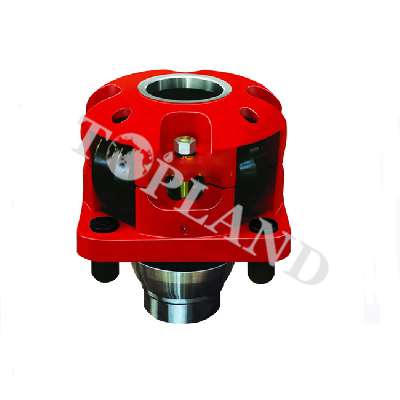THE FUTURE OF PREDICTIVE MAINTENANCE ANALYTICS: DISRUPTIVE TECHNOLOGIES TO ADOPT
Asset performance management (APM) consists of two key elements: predictive analytics and maintenance strategies. Setting the right strategic path for any particular industrial application depends on understanding the current state of equipment health, and then being able to plan for improvement based on predicting what will be needed to maintain and bring assets to an even more efficient state. Within the next three years, the predictive component of APM is poised to encompass transformative disruption to the traditional approach.
Current Approach
The traditional approach of Cloud and on-premises APM has reached a new, more efficient state, but still poses constraints in continuing significant improvements. The following strategies can be viewed as ground-breaking improvements, but each still has limitations to the impact they can exact.
Reduced Deployment Time
Investment in Cloud technology and pre-built models reduces deployment time. Many original equipment manufacturers (OEMs) have had cloud APM capability and prebuilt models since 2016/2017. However, there are still gaps in delivering ongoing value.
Even with cloud-delivered APM, someone must conduct tag mapping, model tuning, and many other laborious steps resulting in high service costs and customizations. This is not a plug-and-play solution.
A prebuilt model strategy saves time and effort by bringing predictive capability online quickly. However, analytics may not operate to the fullest potential from the beginning; prebuilt analytics need a certain amount of customization.
Comprehensive Asset Integration
Facility assets are often part of an aging infrastructure. Value may not be delivered on a timely basis and to the fullest potential. Sensors may be missing or out of calibration, and as a result inadequate data are brought into the cloud APM solution. Analytics need continual updates, and although feedback into the system is valuable, additional customization and services over time and upon equipment updates are needed to continue to improve. This situation can result in expensive updates.
What is Needed to Evolve
To be truly transformative, a new disruptive APM approach must be enacted now to continue to be relevant and maintain continuous advancement within the next 5-10 years. The total available market will be $3B by 2026 and poses significant opportunity for automation OEMs.
Below is a description of the future of wireless technology needed to close gaps and build an enduring, world-class solution. The best strategy is to resolve the predictive side of APM with disruptive technology and combine that with the maintenance side of APM.
● A wing-to-wing solution will be provided that will bypass the need for connecting into existing sensors and historians, and the associated cumbersome deployment process.
● Expediting the process through do-it-yourself ordering and installation by the customer will result in reduced project cost. Simpler scope setting tools will be available for rapid ordering and quotes.
● End users can skip the traditional installation process for APM and incur minimal to no service cost; deployment can be completed in less than a day.
● A process that once relied on connecting assets to a Wi-Fi or cellular network can now be completed directly by the end user and without extra OEM services. Sensors route the data to APM on the Cloud and data shows up in APM health monitoring applications.
● A convergence of technologies will bring about wireless sensors with much greater capabilities, encompassing financial and environmental health and planning. In addition to sensors that can monitor critical parameters such as vibration, speed, amps, temperature, acoustics, and humidity all in one, a wireless solution will aid in energy and emissions management, as well as asset investment planning including decisions regarding replace or repair strategies.
● These sensors will be provided as part of a SAAS model. End users no longer want to own or install sensors/devices because this is a substantial CAPEX and time resource for them; they are only concerned with the services being provided and the end business outcome. There is market shift to providing equipment, installation, maintenance, and the IoT Tech bundled into a monthly reoccurring service fee.
● There should be no limit to the number of sensors that can be added to the system.
● Data hierarchies can be built by the customer using the sensor ID in a straightforward manner.
● Prebuilt analytic models are available and can be deployed remotely by OEM engineers, with minimal effort from a services standpoint.
● This technology can deploy APM in 1/5th - 1/10th the time and deliver value at 1/5th the SaaS cost and 1/5th the services cost.
THE PATH FORWARD
There are still gaps in this technology, and additional investment is needed to realize the full potential of the solution.
1. Vibration sensors show faults quickly, using low hardware overhead for rotating mechanical equipment. That's great - but that's not the entire APM story. There are large swathes of the APM space in which sensors will need to play a role. Investment is needed to grow this space.
2. Performance monitoring of equipment will require measurements of additional parameters such as flowrate and pressure.
3. Solutions will need to include assets such as heat exchangers, furnaces, and electric motors where vibrations don't play a significant role in fault (or performance) monitoring.
Investment in this space will be the path to disruptive technology that will close current gaps in solution delivery. Cloud APM deployment as we know it - connecting to a historian, tag mapping, and model tuning - will become obsolete and applicable to only a few limited large enterprise-wide users. This approach is industry-agnostic and can be sold easily through online portals.
This new technology will encompass APM, energy emissions monitoring, and fuel optimization - and it is the future of digital solutions enabling process optimization.




 Upload RFQ
Upload RFQ





 Twitter
Twitter Linkedin
Linkedin Facebook
Facebook YouTube
YouTube Sales@toplandoil.com
Sales@toplandoil.com +86 21-50890868
+86 21-50890868 Head Office: 8-1011,Lane 5600, Chuansha Road, Pudong, Shanghai, China
Head Office: 8-1011,Lane 5600, Chuansha Road, Pudong, Shanghai, China 